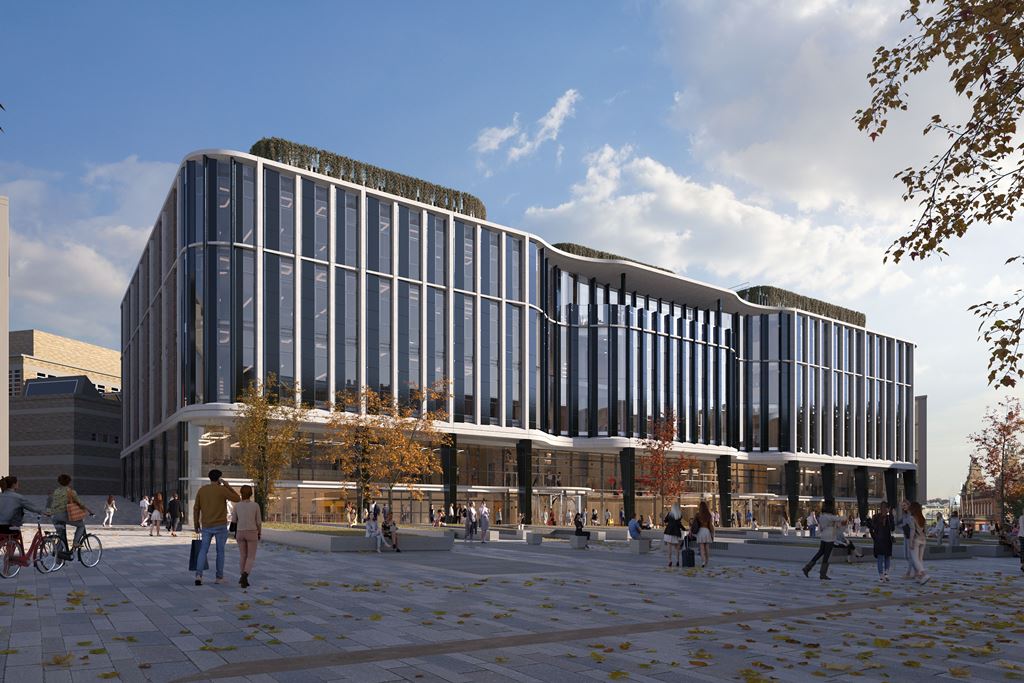Multiplex is main contractor for the Keystone building in the West End of Glasgow, on the university’s historic Gilmorehill campus.
The Keystone building is the fifth major building to be constructed through the University of Glasgow’s £1.3bn campus development programme. Designed by HOK architects, will span a total of 27,000 square metres, making it the second largest building on the campus, after the Gilbert Scott Building.
Keystone will serve as a hub for students of all disciplines and offer a mix of general teaching spaces, technical facilities, collaborative areas and a café.
Alongside general learning and teaching areas, the Keystone building will house a range of dry and wet lab spaces, as well as high-spec computing labs. It will also provide a maker’s workshop and general teaching facilities for the University of Glasgow’s James Watt School of Engineering.
Sir Anton Muscatelli, principal and vice-chancellor of the University of Glasgow, said: “This is a hugely significant investment for our community, providing state of the art learning and teaching facilities for over 3,600 students, which will allow us to continue to attract the brightest and best students and staff to Glasgow. In addition, it will deliver a range of specialist equipment and spaces to support our world-leading education in engineering and biomedical sciences.

“This investment in Keystone also signifies the university’s continued commitment to being a civic institution for Glasgow, creating vibrant new spaces which will be of benefit to not only our own students, but also to our local community.”


Gary Clark, HOK’s regional principal of science and technology, said: “The Keystone represents the future of interdisciplinary science and teaching with advanced research labs, teaching ‘super labs’ and the latest in sustainable design.
“Once open, it will be one of the largest net-zero-carbon university buildings in the UK, and one of the most welcoming, with neuro-inclusive workspaces embedded throughout.
“The building complements the historic architecture of the University of Glasgow through the use of stone, brick and terracotta while its dramatic responsive façade design, inspired by Victorian architecture, reveals the art of the possible in terms of both scientific learning and net-zero development.”

